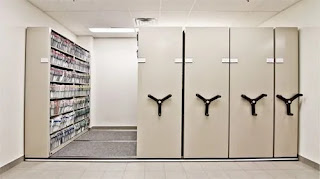Introduction:
Mould and die tooling racks are specialized storage
solutions designed to keep moulds and dies organized, protected, and easily
accessible in manufacturing and industrial settings. These tools are essential
for the efficient functioning of industries such as automotive, aerospace, plastics,
and metalworking, where moulds and dies are regularly used in high-precision
production processes.
Importance
of Mould & Die Tooling Racks:
- Organized
Storage: Tooling racks help maintain
an organized workspace. With so many different types of moulds and dies used in production, an organized system reduces time spent searching for
the right tools and improves workflow.
- Enhanced
Safety:
Storing moulds and dies on racks ensures they are securely placed,
reducing the risk of mishandling, accidental damage, or even injury.
- Tool
Protection: The
racks help protect the moulds and dies from dirt, moisture, and physical
damage. This not only extends the lifespan of the tools but also reduces
maintenance and replacement costs.
- Maximized
Space Utilization: Tooling racks make it possible to store
moulds and dies vertically or in an organized manner, saving valuable
floor space in a factory or workshop.
Types of
Mould & Die Tooling Racks:
- Vertical
Tooling Racks: These
racks are designed to store moulds and dies vertically, often with
adjustable shelves. They are perfect for larger tools that require easy
access and space efficiency.
- Horizontal
Tooling Racks: In
contrast, horizontal racks offer flat surfaces to store moulds and dies.
These are ideal for tools that are heavy and need extra support.
- Rotary
Tooling Racks: Rotary
racks are typically used for smaller moulds and dies. These racks rotate,
offering 360-degree accessibility, which makes it easier to access stored
tools without rearranging the entire system.
- Mobile
Tooling Racks: Mobile
racks can be moved throughout a workshop or factory floor. These are
especially helpful when tools are needed in different parts of the
production process.
Material
& Durability:
The materials used for tooling racks are critical
to ensuring they last under tough industrial conditions. Common materials
include:
- Steel: Durable, strong, and
corrosion-resistant, steel racks are commonly used for heavy-duty tooling.
- Aluminum: Lighter than steel but
still offers decent strength and durability, making it a good choice for
mobile racks or areas with limited weight-bearing capacity.
- Powder
Coated Finishes: For
added protection against corrosion, many racks are powder-coated, offering
an extra layer of durability, especially in environments with high
humidity or exposure to chemicals.
Benefits
of Investing in High-Quality Tooling Racks:
- Improved
Productivity:
When tools are well-organized, operators spend less time searching for the
right equipment, leading to smoother operations and higher productivity.
- Cost
Savings:
Proper storage helps prevent tool damage, reducing the need for repairs or
replacements.
- Efficiency
in Maintenance:
Having a clearly organized system for tools makes it easier for staff to
maintain and inspect equipment regularly.
- Scalability: As businesses grow, the
tooling rack systems can be expanded or customized to fit additional
tools, making them a long-term investment.
Conclusion:
Mould and die tooling racks are a vital part of
ensuring an efficient, safe, and organized workspace in industrial
environments. Investing in a high-quality, well-designed tooling rack system
can lead to improved productivity, better tool protection, and a more organized
workshop. Whether you are dealing with large, complex dies or smaller moulds,
there’s a tooling rack solution that can meet your needs.






